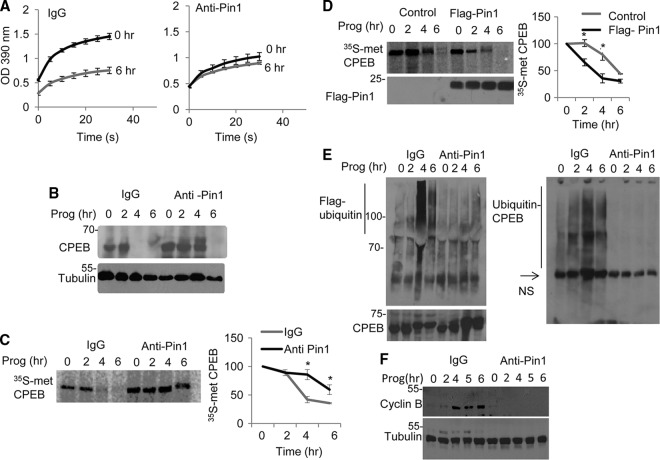Fig 4.
Pin1 enhances ubiquitination and destruction of CPEB. (A) Extracts from oocytes, some of which were treated with progesterone, were injected with IgG or Pin1 antibody, and the cis-trans isomerization analysis as depicted in Fig. 3A was performed. (B) Oocytes were injected with IgG or Pin1 antibody, treated with progesterone, and immunoblotted for CPEB or tubulin. (C) Oocytes were injected with IgG or Pin1 antibody, followed by incubation in [35S]methionine-containing medium for 3 h and progesterone treatment. At the indicated times, the extracts were subjected to CPEB immunoprecipitation and analysis by SDS-PAGE and autoradiography. (D) Oocytes were injected with Flag-Pin1 or control RNA, followed by incubation in [35S]methionine-containing media for 3 h and then treated with progesterone. At the indicated times, the extracts were subjected to CPEB immunoprecipitation and analysis by SDS-PAGE and autoradiography. (E) Oocytes were injected with Flag-ubiquitin peptide together with IgG or Pin1 antibody. CPEB was then immunoprecipitated and probed for CPEB and Flag-ubiquitin (left) or Flag immunoprecipitated and probed for CPEB (right). NS refers to a nonspecific band. (F) Oocytes were injected with IgG or Pin1 antibody, treated with progesterone, and then probed in Western blots for cyclin B and tubulin.

